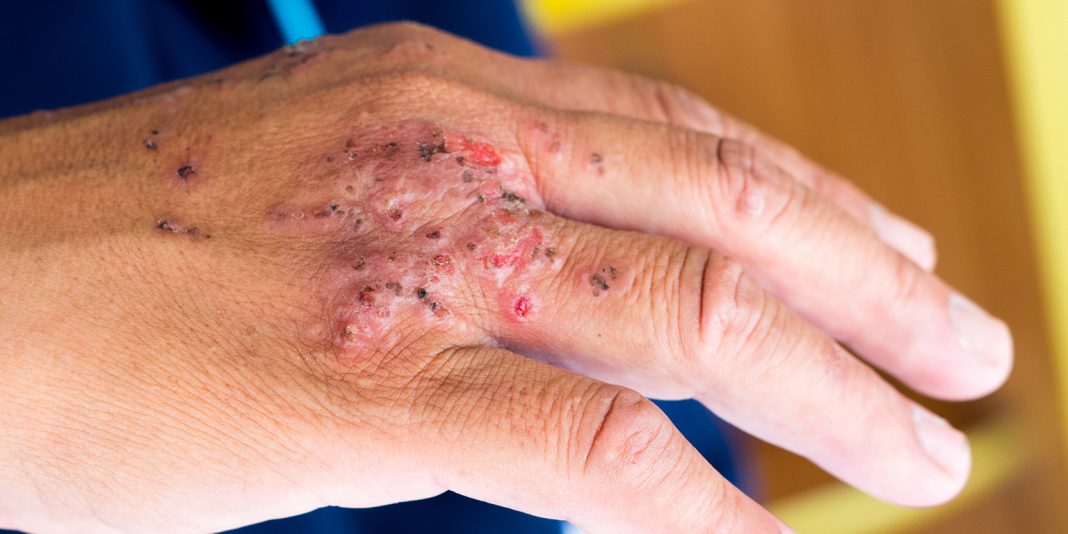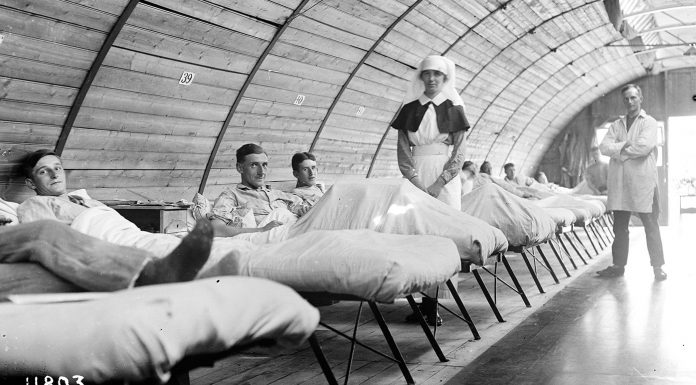
Keep it simple” is the mantra for cosmetic nurse Lara Molloy.
Many women have bathroom cabinets and drawers cluttered with cleansers, toners, hydrating face masks, exfoliating scrubs, pore minimisers, eye gels and other creams and lotions offering to lift, firm, hydrate, renew, boost and otherwise make our skin radiantly youthful.
Molloy is well aware that many of these lotions and potions just sit on the shelf gathering dust. So what she advises clients at her appearance medicine clinic – many of them nurses aged from their mid-20s to close to retirement – is to get back to the basics.
While her clinic offers Botox to laser treatment, she says the secret is getting the ‘canvas’ right; that is, looking after the biggest organ of your body – your skin.
“To me, the canvas is far more important than the odd line here or there,” says Molloy. “I really work hard on getting great skin.”
Good skin care at your supermarket
Good basic skin care doesn’t have to break the bank.
For nurses who don’t have the inclination or the money for high-end skin care products, Molloy advocates investing in a good moisturiser and UV protectant and not wasting money on cleansers and toners.
“You can get dragged into a myriad of products that you don’t need,” she says.
“All the cleansers that have special ingredients in them – they are just put on and washed off immediately so you really don’t need to get anything too flashy.”
She says Cetaphil is a good basic range – they have a cleanser for both dry and oily skins – and it is available on the supermarket shelf. “It is one I would recommend for people who are budget-conscious – and nurses usually are.”
Likewise you don’t need a toner. Molloy says pick up a pack of microfibre cloths from your supermarket aisle instead – the everyday ones for dusting and cleaning, not the shiny ones for glass polishing as they are too smooth.
“The normal microfibre cloth feels really soft but they are actually quite rough and abrasive. So at night after cleansing your skin just give your skin a gentle buff with a microfibre cloth and warm water. Then just rinse out the cloth so it dries and is and ready for the next night.
“That’s instead of using toners as the cloth gets all the residual make-up off and helps lift off the dead skin cells as well, without any chemicals. I’ve put most of my clients onto microfibre cloths now – they are brilliant.
“It’s like a mini micro-dermabrasion every night – but don’t be too rough.”
In your 20s your night-time regime can then just end with the applying of a simple moisturiser suitable for your skin type.
Molloy says if you have oily skin or combination skin you should avoid cream-style moisturisers containing oily substances (like cocoa butter/coconut oil) and instead opt for lotion-style products with humectant (moisture absorbing or attracting) agents like glycerine and hyaluronic acid.
Everyday UV protection is a must
Sun damage leads to premature ageing of the skin for many Kiwis.
Many of us, with the wisdom of hindsight, look back to the sun-filled days of our smooth-skinned 20s and wish we had slipped on a hat and slapped on some sunblock far, far more often.
Molloy agrees that prevention is better than cure so she recommends that Kiwis take sun protection one step further if we don’t only want to reduce the risk of skin cancers but also our chances of premature wrinkles and sun spots.
“Absolutely every morning – summer and winter – you should use a SPF30+ (sun protection factor) moisturiser under your make-up.”
Yes, even indoors
Even if you are likely to be indoors at work all day, Molloy points out that fluorescent lights also emit UV (ultraviolet) rays that, with long-term exposure, can impact on the skin. A 2012 study found that energy efficient CFL (curlicue compact fluorescent lamps) bulbs emit even more UV rays than traditional fluorescent tubes and may damage healthy skin cells and exacerbate existing skin conditions.
Finding the right SPF moisturiser that suits you and your pocket is a matter of trialling some of the many products on the market, says Molloy, but it is the area that people should avoid going ‘budget’ if they can. People with oily skins can struggle to find a combined SPF moisturiser that works for them without having skin breakouts. Also people with dry skin whose skin feels tight after applying an SPF moisturiser will need to shop around. So some people can opt to use a standalone SPF30+ sunscreen and then a moisturiser on top.
“For people on a really tight budget with dry skin, probably popping on an SPF30+ block and olive oil is absolutely fine,” says Molloy. “Anything that traps or prevents moisture loss for a dry skin is fantastic, as long as they are not prone to pimples.”
Skin care as we age
A daily skin regime for the nurse in their 20s can be quick, simple and relatively cheap.
But even the skin of those who have been religious in protecting themselves from sun damage will naturally start to change as people get further into their 30s, 40s and beyond. And for those of us who had a peeling nose every summer as a child this process is even faster.
So Molloy suggests stepping up your skin care regime as you move into your 30s and 40s if you care about keeping your skin looking as good as possible. And that usually means adding at least one more product or step to your nightly regime after the usual cleansing, buffing and moisturising.
How far you go is a matter of personal choice, budget and the amount of time you are ready to invest in your beauty regime. “You should see my bathroom,” she laughs.
What that product or treatment is also depends largely on your skin type and history.
Active ingredients the key
Molloy suggest that once you get into your 30s and if you’ve had a history of sun damage as a child you should look to add an antioxidant product.
“A decent vitamin C (ascorbic acid) product or serum is essential and it helps repairs the cell membranes. It is protective as well as repairing and that would be a basic one to start using.”
Vitamin C treatments are also ideal for people who have pale, thin skin with red vessels (broken capillaries) just starting to show through around the nose or cheeks and who are prone to flushing.
“Well vitamin C is really good for everyone,” says Molloy. “It really does slow down the ageing process.”
She says this is the point when you do start to need to spend more money as off-the-shelf products at your pharmacy or department store don’t have active ingredients in the form and percentage levels required to be absorbed into the skin and make a difference. Instead you need to start stepping into the realm of ‘cosmeceuticals’ – a term coined by the beauty and dermatology sector to describe cosmetics containing high levels of an active pharmaceutical ingredient, such as vitamin C or the vitamin A derivative, retinol.
She says while the big name cosmetic companies may make claims about antioxidants in their beauty products, they are not present in high percentages. “And while they can use lovely emollients and the products feel good on your face, they are not going to protect your skin and make a long-term difference.”
While high-strength cosmeceuticals can cost a little more, she says, you can be very frugal with them and just use a drop of serum for each cheek; the difference is obvious after three months.
Vitamin C is the most plentiful antioxidant in human skin. It helps protect the skin from oxidative stress and is essential for the making of collagen. A quick Google search of research studies finds numerous citations for topical vitamin C and vitamin A derivatives improving the appearance of sun-aged skin.
For women who seek help in their 40s and beyond – who so often have accumulated more sun damage – she may possibly suggest alternating nights with a vitamin A product as well.
“But with nurses you just don’t want to overwhelm them with too many products. So if anything I would stick to a cleanser, a sunblock and a moisturiser and then I would add in a ‘C’ and possibly alternate with an ‘A’ and that’s as fancy as we get.” (Vitamin C and A treatments should not be used together as they can interfere and nearly negate each other.)
Adult acne and dermatitis
While most of Molloy’s clients come to see her with age-related concerns from frown lines to pigmentation changes, there are also other skin conditions that clients want remedied.
People with oily skin are less likely to get the premature fine wrinkles worrying other woman, and their skin needs less moisturising, but they can have other issues like adult acne.
The onset of adult acne – usually hormonally triggered – is not an uncommon problem, says Molloy, but it can be devastating for women who’ve had great skin all their lives to suddenly get pimples in their 30s, 40s or 50s. Acne usually occurs along the chin and jawline and sometimes down the neck but can also affect all areas of the face.
Molloy says her skin clinic’s resident doctor will carry out tests on the women’s hormone levels and may put some women on the oral contraceptive pill to help stabilise their levels and also consider prescribing a low-dose antibiotic.
But the first preference is for the clinic’s nurses to work with the woman on developing a skin treatment regime that heals the acne without resorting to medication.
Another condition is rosacea, which is redness across the cheeks and nose that can be treated with a topical antibiotic and light-based therapy.
Molloy says it is also surprising how many people walk around unknowingly with low-level dermatitis.
“I will go to do a facial treatment for someone and I will feel this very little insidious bumpy rash – just little tiny, tiny bumps everywhere. They’ve actually got reactionary dermatitis to some skin product they’ve used for years and they don’t even know.”
She says they will tell her “oh that’s just how my skin is” at which she tells them “no, it isn’t” and that they need to change their skin care products. As a transition, she usually advises them to use the most basic and pure of products –a tub of fatty cream – as an interim moisturiser until their skin stabilises and they can reintroduce something a little more high-tech.
Her nurses will suggest a similar regime for anybody with general dermatitis or eczema. “They withdraw all the patient’s usual skin products and give them Cetaphil to cleanse with and fatty cream as a moisturiser. They will then slowly re-introduce products one-by-one to make sure they are not reacting to anything in the new regime.”
Retinol recovering from bad name
Retinoids – the vitamin A derivative used in skin treatment – had their fair share of negative press back when Retin-A (retinoic acid) first came on to the market in the 1990s as the miracle anti-ageing cream.
Molloy says the early cosmeceutical came under attack because of uninformed people getting hold of prescription strength Retin-A and going “gung-ho” with it.
“Retinol is fantastic for every skin type,” says Molloy. “But you’ve just got to be really careful because if you use too much of it before your skin’s receptors are ready to take it on you will get redness, irritation and be sensitive to the sun.”
Dermatologists still believed in retinoids and after the backlash of the 1990s went on to develop new products – often using the milder form, retinol. Retinoids still have to be used with caution.
“But Retinol is amazing if you use it twice a week and slowly build up.” Too much too soon and you will get flakiness of the skin and you will need to back off.
Because of the need to ensure people use this very effective cosmeceutical wisely and well, it is now marketed in a variety of strengths.
So Molloy says a first-time user will be given the weakest strength in case they are tempted to use “buckets of it” in the belief that “the more the better”. After three months they will then be trusted to step up to the next strength and can step up again in a further three months.
Basic skin care tips
Morning regime:
- Cleanse your skin morning and night.
- Dry skin: use a milky cleanser.
- Oily skin: use a gentle foaming cleanser.
- Don’t spend a fortune on a cleansing lotion – Cetaphil is a good option.
- Every day use an SPF30+ moisturiser to prevent not only sun damage but also environmental damage from fluorescent lighting.
- If you are on a really tight budget and have dry skin, you can get away with putting on an SPF30+ sunblock and using olive oil as a moisturiser.
Night time regime:
- Remove makeup and cleanse with your usual cleansing lotion.
- You don’t need to use a toner, instead gently buff your face with an everyday microfibre cloth and warm water. The cloth is mildly abrasive and will remove any residual make-up and dead skin cells.
- Apply moisturiser suitable for your skin type.
- When you get into your 30s, consider adding a vitamin C serum to your nightly regime to protect and repair sun damage.
- In your 40s, consider also adding an additional vitamin A/retinol treatment but remember to follow instructions closely to avoid adverse skin reactions.
Hints for looking your best when tired:
- Drink lots of water during the day to keep yourself hydrated.
- Consider popping some antioxidants such as vitamin C, and vitamin B for stress.
- Eat lots of fresh fruit and vegetables.
- Consider using a skin illuminating base or primer under your make-up to help your foundation sit nicely and make your skin look brighter and fresher.
*Sidebar altered on March 12 2015 to remove hand care tips. For more information on hand hygiene and hand care tips for nurses see: http://www.hha.org.au/About/ABHRS/abhr-limitations/hand-care-issues.aspx























